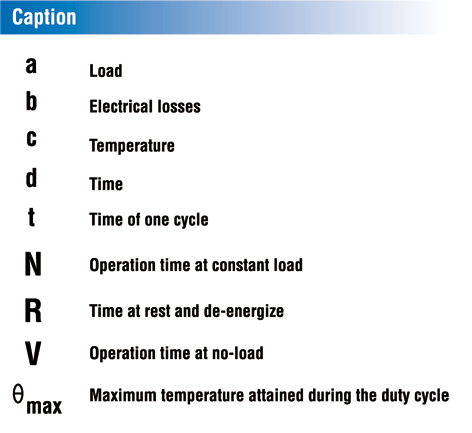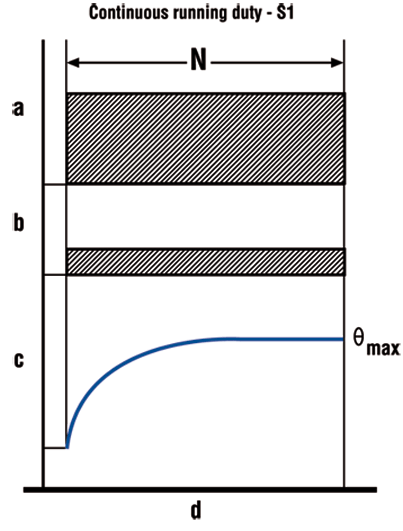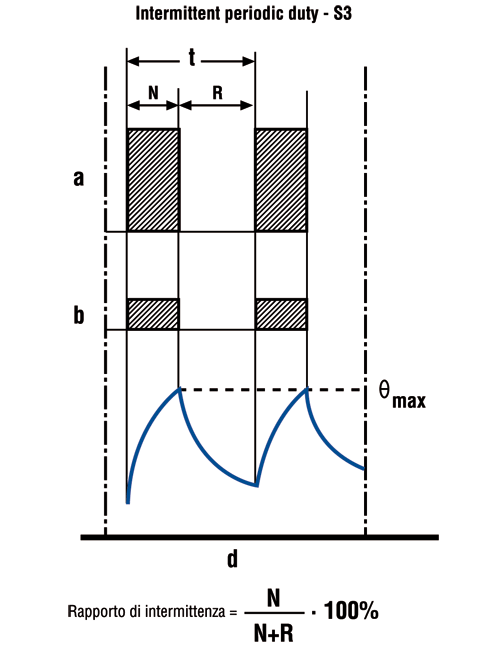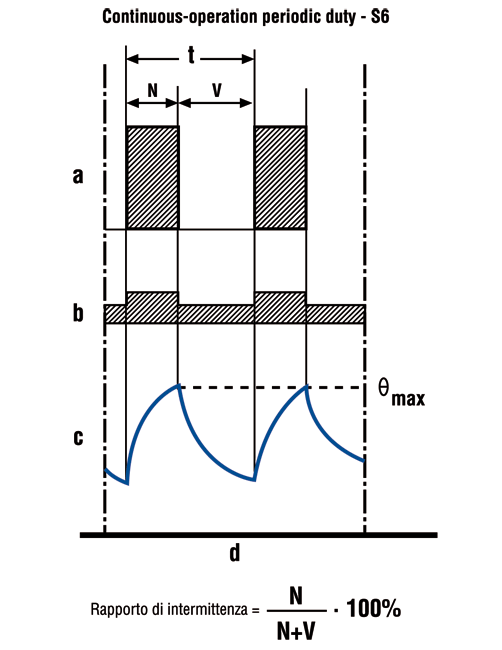Motors Duties

In order to dimension the motors correctly it is extremely important to specify the kind of operation the motor is to perform.
Regulation CEI 2-3, dossier 8284, in accordance with European (CENELEC EN 60034-1) and international standards (IEC 60034-1), distinguishes 10 types of intermittent duties, whose operating criteria are specified below:

Continuous duty – S1
Operation under constant load, lasting long enough to allow the machine to reach thermal equilibrium (see figure 1).
Short-time duty – S2
Operation under constant load for a given time, less than that required to reach thermal equilibrium, followed by a time de-energized and at rest of sufficient duration for the machine and coolant to reach the same temperature, with a tolerance of 2K.

Intermittent periodic duty – S3
A sequence of identical duty cycles, each consisting of a time of operation at constant load and a resting phase (see figure 2). In this duty, the cycle is such that the starting current does not significantly affect the temperature rise. (1)
Intermittent periodic duty with starting – S4
A sequence of identical duty cycles, each consisting of a significant starting time, a time of operation at constant load and a time at rest and de-energized. (1)
.
Intermittent periodic duty with electric braking – S5
A sequence of identical duty cycles, each consisting of a significant starting time, a time of operation at constant load, a rapid electric braking and a time at rest and de-energized. (1)

Continuous-operation periodic duty – S6
A sequence of identical duty cycles, each consisting of a time of operation at constant load and a time of operation at no-load. There is no time de-energized and at rest (see figure 3). (1)
Continuous-operation periodic duty with electric braking – S7
A sequence of identical duty cycles, each consisting of a significant starting time, a time of operation at constant load and an electric braking. There is no time de-energized and at rest. (1)
Continuous-operation periodic duty with related load/speed change – S8
A sequence of identical duty cycles, each consisting of a time of operation at constant load corresponding to a predetermined speed of rotation, followed by one or more times of operation at other constant loads corresponding to different speeds of rotation (carried out, for example, by means of a change in the number of poles in the case of induction motors). There is no time de-energized and at rest. (1)
Operation with non-periodic load and speed variation – S9
A duty in which generally load and speed vary non-periodically within the permissible operating range.
This duty includes frequently applied overloads that may greatly exceed the reference loads.
Operation with discrete constant load – S10
A duty consisting of not more than four discrete values of load (or equivalent loading), each value being maintained for sufficient time to allow the machine to reach thermal equilibrium. The minimum load within a duty cycle may have the value zero (no-load or res 1)



